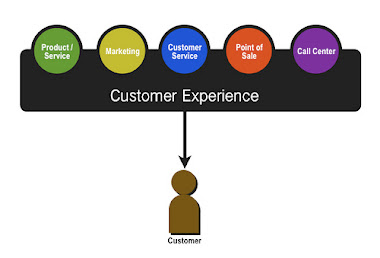Customer Experience based on 1 Person
Andrew Konoff: Customer Experience Can Learn Lots From Design
For whatever reason, my family has always cared a lot about design. I grew up surrounded by people who were obsessed with making something work best for the people who would use it. It took probably twenty revisions for my parents to settle on what the stairs should look like in our house, but when they were built, there was no question: it was worth it.
You should spend the time on good design.
Now that I work in customer experience management, I’m often reminded of the complex world that designers have learned to navigate. I think that designers might have something to share with us, because ultimately, we’re all tasked with building experiences that delight people. The quotes that follow offer a taste of the way that talented designers bring beautiful solutions to the world.
“There is no design without discipline. There is no discipline without intelligence.” – Massimo Vignelli
Here’s a fun hypothetical: you’re the CEO of a 10,000 person company that serves millions of customers. You have to improve the customer experience to staunch the flow of dissatisfied customers to competitors, or you risk irrelevancy and then bankrupcy.
By now, you probably have a couple questions: where do we start? How much will it cost? What counts as a better experience? When do we know we’ve done enough? What are the complaints people currently have?
You can’t answer these questions without data – without intelligence. And without constantly consulting the right metrics, you’ll be undisciplined in your changes. Your customer experience improvements will be haphazard, temporary, and doomed to fail. There is no hope for customer experiences without discipline.
“People ignore design that ignores people.” – Frank Chimero
Let’s not forget who we’re building our companies for: the people we serve.
Well, that might be presumptuous – you might think your company is just meant to make a quick buck. And that’s fine. But there’s a boatload of evidence that better customer experiences drive far more revenue. It’s what can differentiate a business in a competitive space, and lock in customers once they’ve tried you once. If you want your business to last, you can’t ignore the people you serve.
“Design is about making things good (and then better) and right (and then fantastic) for the people who use and encounter them.” – Matt Beale
Good, better. Right, fantastic. These are normative terms, because design asks you to make decisions based on certain values. If you’re a moral, competent designer, you do what makes life good for people.
Are you a moral company? If you have any customers at all, it’s probably because you fill a need in your customers’ lives. They depend on you for something. It would be profoundly bad if you made your customers lives suck just because they thought they could rely on you.
Enough businesses make things good and right these days – they’re reliable, they’re safe. If you’re committed to customer experience management, then that’s not enough. It wouldn’t be enough for your customers, and you wouldn’t feel like it’s enough for you. You should want, within the confines of your budget and mandate, to do as good by your customers as you can.
They’ll remember, and they’ll even pay for the privilege. That’s because people really do value the things and the companies that even small parts of their life fantastic.
Design and customer experience are about people
Just as a chef has to spend a large amount of time with a kitchen knife, everyone spends a big chunk of time interacting with corporations. If a knife dulls too soon, or is uncomfortable to hold, you’d want a better knife, right? Same thing for companies: bad experiences send a huge percentage of people to find a better alternative.
So treat customers like people. Understand them, care for their needs, and deliver things they didn’t even ask for. That’s what the best designers do, and it’s what customer experience professionals need to understand to make truly wonderful experiences.

No comments:
Post a Comment